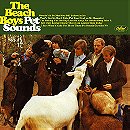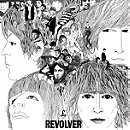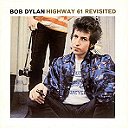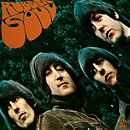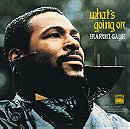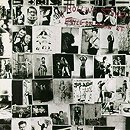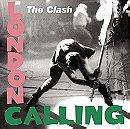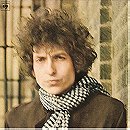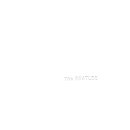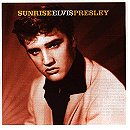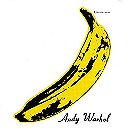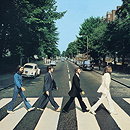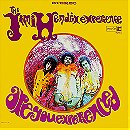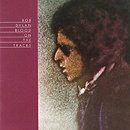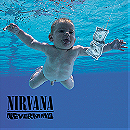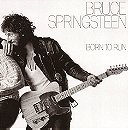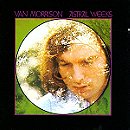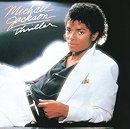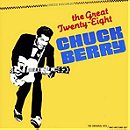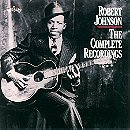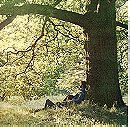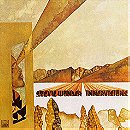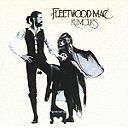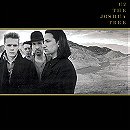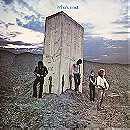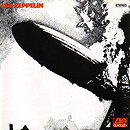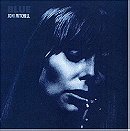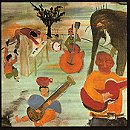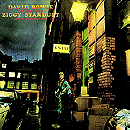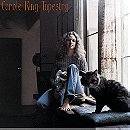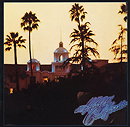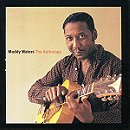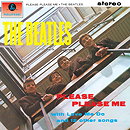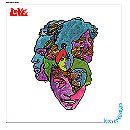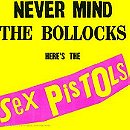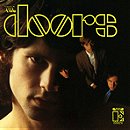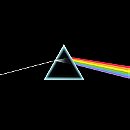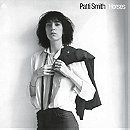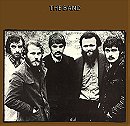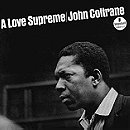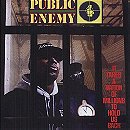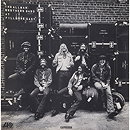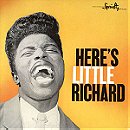RS 500: Part 1
Sort by:
Showing 1-50 of 100
Rating:
List Type:
Rolling Stone's 500 Greatest Albums of All-Time [book version]
"Editor’s Note
This book began in December of 2003, when Rolling Stone published the RS 500, an issue devoted to the greatest records of all time. Out list of albums was selected by a blue-ribbon panel of experts and true fans: the singers, songwriters, musicians, producers, label executives, artist managers and critics, among others, who have shaped rock & roll in its first half-century. The 273 voters spanned every decade and genre of popular music, from the 1950s to the present, including Billie Joe Armstrong and Tre Cool of Green Day, the Edge of U2, Fats Domino, James Hetfield and Lars Ulrich of Metallica, Beck, Carole King, Jackson Browne, Ray Manzarek and John Densmore of the Doors, Dion DiMucci, Shirley Manson and Butch Vig of Garbage, Adam Yauch of the Beastie Boys, Missy Elliott and Little Steven. The voters were asked to select and rank their fifty top albums of all time. The ballot was open – any album was eligible – and we cast our net wide: Both folk patriarch Pete Seeger and pop princess Britney Spears voted (you can see a full list of voters here). The ballots were tabulated according to a weighted point system developed by the accounting firm of Ernst & Young under the supervision of the editors of Rolling Stone.
The 500 albums selected represent the most exciting and vital music ever recorded, from the shellac 78s made on November 23rd, 1936, by Robert Johnson in a San Antonio, Texas, hotel room – finally compiled on LP nearly thirty years after his death – to the twenty-first-century garage rock of the White Stripes. Out list was inclusive, but – our readers let us know – not perfect. Led Zeppelin fans were astounded that Zeppelin didn’t crack the top 10; Deadheads were even more amazed that the Grateful Dead didn’t crack the top 200. Other readers complained about the presence of compilation albums and greatest-hits packages, a fair criticism, but one that would have left out the pioneer artists who did their best work on singles in the days before the LP, including Chuck Berry, Little Richard, Jerry Lee Lewis, Howlin’ Wolf, Hank Williams, John Lee Hooker and Muddy Waters. No list of greatest rock & roll albums would be complete without these artists. Still, for this book version of the RS 500 I have eliminated a few compilation albums that simply repeated material appearing elsewhere on albums that made the list. I’ve also combined the two volumes of Robert Johnson’s King of the Delta Blues Singers – the LPs on which many of the voters first heard Johnson (Bob Dylan is pictured alongside a copy of the first volume on the cover of Bringing It All Back Home) – into the more readily available Complete Recordings. That left room for eight new albums to bubble up from the bottom of our tally. I’m sorry to tell you that still leaves Workingman’s Dead at No. 259.
But I can tell you that these 500 albums – which are credited to the labels that currently have them in print – have shaped and defined the music we call rock & roll. Country, blues, gospel, pop, soul, R&B, funk, hip-hop, acid-rock, heavy metal, punk – every way there is to scream and shout, soothe and seduce, get up to get down, and keep on moving – it’s all here. Each of these albums have been crucial to rock’s history, its present or its future. And each one testifies to how much the music has shaped and defined us. My guess is you’ll find a lot of your own history here. I know I do: The first albums I ever bought were Bruce Springstein’s Born to Run [No. 18] and Elvis Costello’s Armed Forces [No. 474]. I started making my own list that day in 1979, and I haven’t stopped since.
Joe Levy
Deputy Managing Editor"
RS 500: Part 1
RS 500: Part 2
RS 500: Part 3
RS 500: Part 4
RS 500: Part 5
RS: The Immortals
RS: 100 Greatest Singers
RS: 50 Essential "Women in Rock" Albums
"Editor’s Note
This book began in December of 2003, when Rolling Stone published the RS 500, an issue devoted to the greatest records of all time. Out list of albums was selected by a blue-ribbon panel of experts and true fans: the singers, songwriters, musicians, producers, label executives, artist managers and critics, among others, who have shaped rock & roll in its first half-century. The 273 voters spanned every decade and genre of popular music, from the 1950s to the present, including Billie Joe Armstrong and Tre Cool of Green Day, the Edge of U2, Fats Domino, James Hetfield and Lars Ulrich of Metallica, Beck, Carole King, Jackson Browne, Ray Manzarek and John Densmore of the Doors, Dion DiMucci, Shirley Manson and Butch Vig of Garbage, Adam Yauch of the Beastie Boys, Missy Elliott and Little Steven. The voters were asked to select and rank their fifty top albums of all time. The ballot was open – any album was eligible – and we cast our net wide: Both folk patriarch Pete Seeger and pop princess Britney Spears voted (you can see a full list of voters here). The ballots were tabulated according to a weighted point system developed by the accounting firm of Ernst & Young under the supervision of the editors of Rolling Stone.
The 500 albums selected represent the most exciting and vital music ever recorded, from the shellac 78s made on November 23rd, 1936, by Robert Johnson in a San Antonio, Texas, hotel room – finally compiled on LP nearly thirty years after his death – to the twenty-first-century garage rock of the White Stripes. Out list was inclusive, but – our readers let us know – not perfect. Led Zeppelin fans were astounded that Zeppelin didn’t crack the top 10; Deadheads were even more amazed that the Grateful Dead didn’t crack the top 200. Other readers complained about the presence of compilation albums and greatest-hits packages, a fair criticism, but one that would have left out the pioneer artists who did their best work on singles in the days before the LP, including Chuck Berry, Little Richard, Jerry Lee Lewis, Howlin’ Wolf, Hank Williams, John Lee Hooker and Muddy Waters. No list of greatest rock & roll albums would be complete without these artists. Still, for this book version of the RS 500 I have eliminated a few compilation albums that simply repeated material appearing elsewhere on albums that made the list. I’ve also combined the two volumes of Robert Johnson’s King of the Delta Blues Singers – the LPs on which many of the voters first heard Johnson (Bob Dylan is pictured alongside a copy of the first volume on the cover of Bringing It All Back Home) – into the more readily available Complete Recordings. That left room for eight new albums to bubble up from the bottom of our tally. I’m sorry to tell you that still leaves Workingman’s Dead at No. 259.
But I can tell you that these 500 albums – which are credited to the labels that currently have them in print – have shaped and defined the music we call rock & roll. Country, blues, gospel, pop, soul, R&B, funk, hip-hop, acid-rock, heavy metal, punk – every way there is to scream and shout, soothe and seduce, get up to get down, and keep on moving – it’s all here. Each of these albums have been crucial to rock’s history, its present or its future. And each one testifies to how much the music has shaped and defined us. My guess is you’ll find a lot of your own history here. I know I do: The first albums I ever bought were Bruce Springstein’s Born to Run [No. 18] and Elvis Costello’s Armed Forces [No. 474]. I started making my own list that day in 1979, and I haven’t stopped since.
Joe Levy
Deputy Managing Editor"
RS 500: Part 1
RS 500: Part 2
RS 500: Part 3
RS 500: Part 4
RS 500: Part 5
RS: The Immortals
RS: 100 Greatest Singers
RS: 50 Essential "Women in Rock" Albums
Sgt. Pepper's Lonely Hearts Club Band - The Beatles
"Sgt. Pepper's Lonely Hearts Club Band is the most important rock & roll album ever made, an unsurpassed adventure in concept, sound, songwriting, cover art and studio technology by the greatest rock & roll group of all time. From the title song's regal blasts of brass and fuzz guitar to the orchestral seizure and long, dying piano chord at the end of "A Day in the Life," the thirteen tracks on Sgt. Pepper's Lonely Hearts Club Band are the pinnacle of the Beatles' eight years as recording artists. John Lennon, Paul McCartney, George Harrison and Ringo Starr were never more fearless and unified in their pursuit of magic and transcendence.
Issued in Britain on June 1st, 1967, and a day later in America, Sgt. Pepper's Lonely Hearts Club Band is also rock's ultimate declaration of change. For the Beatles, it was a decisive goodbye to matching suits, world tours and assembly-line record-making. "We were fed up with being Beatles," McCartney said decades later, in Many Years From Now, Barry Miles' McCartney biography. "We were not boys, we were men . . . artists rather than performers."
At the same time, Sgt. Pepper formally ushered in an unforgettable season of hope, upheaval and achievement: the late 1960s and, in particular, 1967's Summer of Love. In its iridescent instrumentation, lyric fantasias and eye-popping packaging, Sgt. Pepper defined the opulent revolutionary optimism of psychedelia and instantly spread the gospel of love, acid, Eastern spirituality and electric guitars around the globe. No other pop record of that era, or since, has had such an immediate, titanic impact. This music documents the world's biggest rock band at the very height of its influence and ambition. "It was a peak," Lennon confirmed in his 1970 Rolling Stone interview, describing both the album and his collaborative relationship with McCartney. "Paul and I definitely were working together," Lennon said, and Sgt. Pepper is rich with proof: McCartney's burst of hot piano and school-days memoir ("Woke up, fell out of bed . . . ") in Lennon's "A Day in the Life," a reverie on mortality and infinity; Lennon's impish rejoinder to McCartney's chorus in "Getting Better" ("It can't get no worse").
"Sgt. Pepper was our grandest endeavor," Starr said, looking back, in the 2000 autobiography The Beatles Anthology. "The greatest thing about the band was that whoever had the best idea — it didn't matter who — that was the one we'd use. No one was standing on their ego, saying, 'Well, it's mine,' and getting possessive." It was Neil Aspinall, the Beatles' longtime assistant, who suggested they reprise the title track, just before the grand finale of "A Day in the Life," to complete Sgt. Pepper's theatrical conceit: an imaginary concert by a fictional band, played by the Beatles.
The first notes went to tape on December 6th, 1966: two takes of McCartney's music-hall confection "When I'm Sixty-Four." (Lennon's lysergic reflection on his Liverpool childhood, "Strawberry Fields Forever," was started two weeks earlier but issued in February 1967 as a stand-alone single.) But Sgt. Pepper's real birthday is August 29th, 1966, when the Beatles played their last live concert, in San Francisco. Until then, they had made history in the studio — Please Please Me (1963), Rubber Soul (1965), Revolver (1966) — between punishing tours. Off the road for good, the Beatles were free to be a band away from the hysteria of Beatlemania. McCartney went a step further. On a plane to London in November '66, as he returned from a vacation in Kenya, he came up with the idea of an album by the Beatles in disguise, an alter-ego group that he subsequently dubbed Sgt. Pepper's Lonely Hearts Club Band. "We'd pretend to be someone else," McCartney explained in Anthology. "It liberated you — you could do anything when you got to the mike or on your guitar, because it wasn't you."
Only two songs on the final LP, both McCartney's, had anything to do with the Pepper character: the title track and Starr's jaunty vocal showcase "With a Little Help From My Friends," introduced as a number by Sgt. Pepper's star crooner, Billy Shears. "Every other song could have been on any other album," Lennon insisted later. Yet it is hard to imagine a more perfect setting for the Victorian jollity of Lennon's "Being for the Benefit of Mr. Kite!" (inspired by an 1843 circus poster) or the sumptuous melancholy of McCartney's "Fixing a Hole," with its blend of antique shadows (a harpsichord played by the Beatles' producer George Martin) and modern sunshine (double-tracked lead guitar executed with ringing precision by Harrison). The Pepper premise was a license to thrill.
It also underscored the real-life cohesion of the music and the group that made it. Of the 700 hours the Beatles spent making Sgt. Pepper (engineer Geoff Emerick actually tallied them) from the end of 1966 until April 1967, the group needed only three days' worth to complete Lennon's lavish daydream "Lucy in the Sky With Diamonds." "A Day in the Life," the most complex song on the album, was done in just five days. (The oceanic piano chord was three pianos hit simultaneously by ten hands belonging to Lennon, McCartney, Starr, Martin and Beatles roadie Mal Evans.) No other Beatles appear with Harrison on his sitar-perfumed sermon on materialism and fidelity, "Within You Without You," but the band wisely placed the track at the halfway point of the original vinyl LP, at the beginning of Side Two: a vital meditation break in the middle of the jubilant indulgence.
The Beatles' exploitation of multitracking on Sgt. Pepper transformed the very act of studio recording (the orchestral overdubs on "A Day in the Life" marked the debut of eight-track recording in Britain: two four-track machines used in sync). And Sgt. Pepper's visual extravagance officially elevated the rock album cover to a Work of Art. Michael Cooper's photo of the Beatles in satin marching-band outfits, in front of a cardboard-cutout audience of historical figures, created by artist Peter Blake, is the most enduring image of the psychedelic era. Sgt. Pepper was also the first rock album to incorporate complete lyrics to the songs in its design.
Yet Sgt. Pepper's Lonely Hearts Club Band is the Number One album of the RS 500 not just because of its firsts — it is simply the best of everything the Beatles ever did as musicians, pioneers and pop stars, all in one place. A 1967 British print ad for the album declared, "Remember Sgt. Pepper's Lonely Hearts Club Band IS the Beatles." As McCartney put it, the album was "just us doing a good show."
The show goes on forever."
Issued in Britain on June 1st, 1967, and a day later in America, Sgt. Pepper's Lonely Hearts Club Band is also rock's ultimate declaration of change. For the Beatles, it was a decisive goodbye to matching suits, world tours and assembly-line record-making. "We were fed up with being Beatles," McCartney said decades later, in Many Years From Now, Barry Miles' McCartney biography. "We were not boys, we were men . . . artists rather than performers."
At the same time, Sgt. Pepper formally ushered in an unforgettable season of hope, upheaval and achievement: the late 1960s and, in particular, 1967's Summer of Love. In its iridescent instrumentation, lyric fantasias and eye-popping packaging, Sgt. Pepper defined the opulent revolutionary optimism of psychedelia and instantly spread the gospel of love, acid, Eastern spirituality and electric guitars around the globe. No other pop record of that era, or since, has had such an immediate, titanic impact. This music documents the world's biggest rock band at the very height of its influence and ambition. "It was a peak," Lennon confirmed in his 1970 Rolling Stone interview, describing both the album and his collaborative relationship with McCartney. "Paul and I definitely were working together," Lennon said, and Sgt. Pepper is rich with proof: McCartney's burst of hot piano and school-days memoir ("Woke up, fell out of bed . . . ") in Lennon's "A Day in the Life," a reverie on mortality and infinity; Lennon's impish rejoinder to McCartney's chorus in "Getting Better" ("It can't get no worse").
"Sgt. Pepper was our grandest endeavor," Starr said, looking back, in the 2000 autobiography The Beatles Anthology. "The greatest thing about the band was that whoever had the best idea — it didn't matter who — that was the one we'd use. No one was standing on their ego, saying, 'Well, it's mine,' and getting possessive." It was Neil Aspinall, the Beatles' longtime assistant, who suggested they reprise the title track, just before the grand finale of "A Day in the Life," to complete Sgt. Pepper's theatrical conceit: an imaginary concert by a fictional band, played by the Beatles.
The first notes went to tape on December 6th, 1966: two takes of McCartney's music-hall confection "When I'm Sixty-Four." (Lennon's lysergic reflection on his Liverpool childhood, "Strawberry Fields Forever," was started two weeks earlier but issued in February 1967 as a stand-alone single.) But Sgt. Pepper's real birthday is August 29th, 1966, when the Beatles played their last live concert, in San Francisco. Until then, they had made history in the studio — Please Please Me (1963), Rubber Soul (1965), Revolver (1966) — between punishing tours. Off the road for good, the Beatles were free to be a band away from the hysteria of Beatlemania. McCartney went a step further. On a plane to London in November '66, as he returned from a vacation in Kenya, he came up with the idea of an album by the Beatles in disguise, an alter-ego group that he subsequently dubbed Sgt. Pepper's Lonely Hearts Club Band. "We'd pretend to be someone else," McCartney explained in Anthology. "It liberated you — you could do anything when you got to the mike or on your guitar, because it wasn't you."
Only two songs on the final LP, both McCartney's, had anything to do with the Pepper character: the title track and Starr's jaunty vocal showcase "With a Little Help From My Friends," introduced as a number by Sgt. Pepper's star crooner, Billy Shears. "Every other song could have been on any other album," Lennon insisted later. Yet it is hard to imagine a more perfect setting for the Victorian jollity of Lennon's "Being for the Benefit of Mr. Kite!" (inspired by an 1843 circus poster) or the sumptuous melancholy of McCartney's "Fixing a Hole," with its blend of antique shadows (a harpsichord played by the Beatles' producer George Martin) and modern sunshine (double-tracked lead guitar executed with ringing precision by Harrison). The Pepper premise was a license to thrill.
It also underscored the real-life cohesion of the music and the group that made it. Of the 700 hours the Beatles spent making Sgt. Pepper (engineer Geoff Emerick actually tallied them) from the end of 1966 until April 1967, the group needed only three days' worth to complete Lennon's lavish daydream "Lucy in the Sky With Diamonds." "A Day in the Life," the most complex song on the album, was done in just five days. (The oceanic piano chord was three pianos hit simultaneously by ten hands belonging to Lennon, McCartney, Starr, Martin and Beatles roadie Mal Evans.) No other Beatles appear with Harrison on his sitar-perfumed sermon on materialism and fidelity, "Within You Without You," but the band wisely placed the track at the halfway point of the original vinyl LP, at the beginning of Side Two: a vital meditation break in the middle of the jubilant indulgence.
The Beatles' exploitation of multitracking on Sgt. Pepper transformed the very act of studio recording (the orchestral overdubs on "A Day in the Life" marked the debut of eight-track recording in Britain: two four-track machines used in sync). And Sgt. Pepper's visual extravagance officially elevated the rock album cover to a Work of Art. Michael Cooper's photo of the Beatles in satin marching-band outfits, in front of a cardboard-cutout audience of historical figures, created by artist Peter Blake, is the most enduring image of the psychedelic era. Sgt. Pepper was also the first rock album to incorporate complete lyrics to the songs in its design.
Yet Sgt. Pepper's Lonely Hearts Club Band is the Number One album of the RS 500 not just because of its firsts — it is simply the best of everything the Beatles ever did as musicians, pioneers and pop stars, all in one place. A 1967 British print ad for the album declared, "Remember Sgt. Pepper's Lonely Hearts Club Band IS the Beatles." As McCartney put it, the album was "just us doing a good show."
The show goes on forever."
JxSxPx's rating:


Pet Sounds - The Beach Boys
'"Who's gonna hear this shit?" Beach Boys singer Mike Love asked the band's resident genius, Brian Wilson, in 1966, as Wilson played him the new songs he was working on. "The ears of a dog?" Confronted with his bandmate's contempt, Wilson made lemonade of lemons. "Ironically," he observed, "Mike's barb inspired the album's title."
Barking dogs — Wilson's dog Banana among them, in fact — are prominent among the found sounds on the album. The Beatles made a point of echoing them on Sgt. Pepper's Lonely Hearts Club Band — an acknowledgment that Pet Sounds was the inspiration for the Beatles' masterpiece. That gesture actually completed a circle of influence: Wilson initially conceived of Pet Sounds as an effort to top the Beatles' Rubber Soul.
Wilson essentially made Sounds without the rest of the band, using them only to flesh out the vocal arrangements. He even considered putting the album out as a solo project, and the first single, "Caroline, No," was released under his own name. The deeply personal nature of the songs, which Wilson co-wrote primarily with lyricist Tony Asher, further distinguished the album from the Beach Boys' typical fare. Its luxurious sound convey a heartbreaking wistfulness, as songs such as "I Just Wasn't Made for These Times" and "I'm Waiting for the Day" bid farewell to the innocent world of the early Sixties and to the Beach Boys' fun-in-the-sun hits.
Unfortunately, Capitol Records proved no more enamored of Pet Sounds than had Love; the label actually considered not releasing the album at all. Not yet vindicated by history, Wilson withdrew further into his inner world. "At the last meeting I attended concerning Pet Sounds," Wilson wrote in his autobiography (which took the name of the album's opening track, "Wouldn't It Be Nice") about his dealings with Capitol's executive brain trust, "I showed up holding a tape player and eight prerecorded, looped responses, including 'No comment,' 'Can you repeat that?' 'No' and 'Yes.' Refusing to utter a word, I played the various tapes when appropriate."
Barking dogs — Wilson's dog Banana among them, in fact — are prominent among the found sounds on the album. The Beatles made a point of echoing them on Sgt. Pepper's Lonely Hearts Club Band — an acknowledgment that Pet Sounds was the inspiration for the Beatles' masterpiece. That gesture actually completed a circle of influence: Wilson initially conceived of Pet Sounds as an effort to top the Beatles' Rubber Soul.
Wilson essentially made Sounds without the rest of the band, using them only to flesh out the vocal arrangements. He even considered putting the album out as a solo project, and the first single, "Caroline, No," was released under his own name. The deeply personal nature of the songs, which Wilson co-wrote primarily with lyricist Tony Asher, further distinguished the album from the Beach Boys' typical fare. Its luxurious sound convey a heartbreaking wistfulness, as songs such as "I Just Wasn't Made for These Times" and "I'm Waiting for the Day" bid farewell to the innocent world of the early Sixties and to the Beach Boys' fun-in-the-sun hits.
Unfortunately, Capitol Records proved no more enamored of Pet Sounds than had Love; the label actually considered not releasing the album at all. Not yet vindicated by history, Wilson withdrew further into his inner world. "At the last meeting I attended concerning Pet Sounds," Wilson wrote in his autobiography (which took the name of the album's opening track, "Wouldn't It Be Nice") about his dealings with Capitol's executive brain trust, "I showed up holding a tape player and eight prerecorded, looped responses, including 'No comment,' 'Can you repeat that?' 'No' and 'Yes.' Refusing to utter a word, I played the various tapes when appropriate."
JxSxPx's rating:


Revolver - The Beatles
'"I don't see too much difference between Revolver and Rubber Soul," George Harrison once said. "To me, they could be Volume One and Volume Two." Revolver extends the more adventurous aspects of its predecessor — its introspection, its nascent psychedelia, its fascination with the possibilities of the studio — into a dramatic statement of generational purpose. The album, which was released in August 1966, made it thrillingly clear that what we now think of as "the Sixties" was fully — and irreversibly — under way.
Part of that revolutionary impulse was visual. Klaus Voormann, one of the Beatles' artist buddies from their days in Hamburg, Germany, designed a striking photo-collage cover for Revolver; it was a crucial step on the road to the even trippier, more colorful imagery of Sgt. Pepper's Lonely Hearts Club Band, which would come less than a year later.
And then there's the music. The most innovative track on the album is John Lennon's "Tomorrow Never Knows." Attempting to distill an LSD trip into a three-minute song, Lennon borrowed lyrics from Timothy Leary's version of The Tibetan Book of the Dead and recorded his vocal to sound like "the Dalai Lama singing from the highest mountaintop." Tape loops, a backward guitar part (Paul McCartney's blistering solo on "Taxman," in fact) and a droning tamboura completed the experimental effect, and the song proved hugely influential. For his part, on "Eleanor Rigby" and "For No One," McCartney mastered a strikingly mature form of art song, and Harrison, with "Taxman," "I Want to Tell You" and "Love You To," challenged Lennon-McCartney's songwriting dominance.
Revolver, finally, signaled that in popular music, anything — any theme, any musical idea — could now be realized. And, in the case of the Beatles, would be."
Part of that revolutionary impulse was visual. Klaus Voormann, one of the Beatles' artist buddies from their days in Hamburg, Germany, designed a striking photo-collage cover for Revolver; it was a crucial step on the road to the even trippier, more colorful imagery of Sgt. Pepper's Lonely Hearts Club Band, which would come less than a year later.
And then there's the music. The most innovative track on the album is John Lennon's "Tomorrow Never Knows." Attempting to distill an LSD trip into a three-minute song, Lennon borrowed lyrics from Timothy Leary's version of The Tibetan Book of the Dead and recorded his vocal to sound like "the Dalai Lama singing from the highest mountaintop." Tape loops, a backward guitar part (Paul McCartney's blistering solo on "Taxman," in fact) and a droning tamboura completed the experimental effect, and the song proved hugely influential. For his part, on "Eleanor Rigby" and "For No One," McCartney mastered a strikingly mature form of art song, and Harrison, with "Taxman," "I Want to Tell You" and "Love You To," challenged Lennon-McCartney's songwriting dominance.
Revolver, finally, signaled that in popular music, anything — any theme, any musical idea — could now be realized. And, in the case of the Beatles, would be."
JxSxPx's rating:


Highway 61 Revisited - Bob Dylan
"Bruce Springsteen has described the beginning of "Like a Rolling Stone," the opening song on Bob Dylan's Highway 61 Revisited, as the "snare shot that sounded like somebody'd kicked open the door to your mind." The response of folk singer Phil Ochs to the entire album was even more rhapsodic. "It's impossibly good. . . ." he said. "How can a human mind do this?"
Recorded in a mind-boggling six days and released in August 1965, Highway 61 Revisited — named after the road that runs from Dylan's home state of Minnesota down through the Mississippi Delta — is one of those albums that, quite simply, changed everything. In and of itself, "Like a Rolling Stone," which was rumored to be about Andy Warhol acolyte Edie Sedgwick, forever altered the landscape of popular music — its "vomitific" lyrics (in Dylan's memorable term), literary ambition and sheer length (6:13) shattered limitations of every kind. But that was literally only the beginning. "Ballad of a Thin Man" delivered the definitive Sixties comment on the splintering hip/ straight fault line: "Something is happening here, but you don't know what it is/Do you, Mr. Jones?" If anyone questioned whether or not Dylan had truly "gone electric," the roaring rock & roll of "From a Buick 6" and "Tombstone Blues" — both powered by legendary guitarist Mike Bloomfield — left absolutely no doubt.
The album ends with "Desolation Row," a swirling eleven-minute surrealist night journey of indescribable power. Confronted with the dilemma of providing an ending to an album so bursting with ideas, Dylan evokes a Hieronymus Bosch-like season in hell that, in retrospect, seems to foretell all the Sixties cataclysms to come. "The Titanic sails at dawn," he sings wearily near the song's end. "Everybody is shouting, 'Which side are you on?' " That "Desolation Row" is an all-acoustic track — a last-minute decision on Dylan's part — is one final stroke of genius: a spellbinding new vision of folk music to close the album that, for the time being at least, destroyed folk music. The gesture was simultaneously touching and a devastating "Fuck you!"
Not that Dylan wasn't having fun all the while as well. The toy siren that opens the album's title track was keyboardist's Al Kooper's playful way of policing the sessions for Highway 61 Revisited. "If anybody started using drugs anywhere," he explained, "I'd walk into the opposite corner of the room and just go whooooooooo."'
Recorded in a mind-boggling six days and released in August 1965, Highway 61 Revisited — named after the road that runs from Dylan's home state of Minnesota down through the Mississippi Delta — is one of those albums that, quite simply, changed everything. In and of itself, "Like a Rolling Stone," which was rumored to be about Andy Warhol acolyte Edie Sedgwick, forever altered the landscape of popular music — its "vomitific" lyrics (in Dylan's memorable term), literary ambition and sheer length (6:13) shattered limitations of every kind. But that was literally only the beginning. "Ballad of a Thin Man" delivered the definitive Sixties comment on the splintering hip/ straight fault line: "Something is happening here, but you don't know what it is/Do you, Mr. Jones?" If anyone questioned whether or not Dylan had truly "gone electric," the roaring rock & roll of "From a Buick 6" and "Tombstone Blues" — both powered by legendary guitarist Mike Bloomfield — left absolutely no doubt.
The album ends with "Desolation Row," a swirling eleven-minute surrealist night journey of indescribable power. Confronted with the dilemma of providing an ending to an album so bursting with ideas, Dylan evokes a Hieronymus Bosch-like season in hell that, in retrospect, seems to foretell all the Sixties cataclysms to come. "The Titanic sails at dawn," he sings wearily near the song's end. "Everybody is shouting, 'Which side are you on?' " That "Desolation Row" is an all-acoustic track — a last-minute decision on Dylan's part — is one final stroke of genius: a spellbinding new vision of folk music to close the album that, for the time being at least, destroyed folk music. The gesture was simultaneously touching and a devastating "Fuck you!"
Not that Dylan wasn't having fun all the while as well. The toy siren that opens the album's title track was keyboardist's Al Kooper's playful way of policing the sessions for Highway 61 Revisited. "If anybody started using drugs anywhere," he explained, "I'd walk into the opposite corner of the room and just go whooooooooo."'
JxSxPx's rating:


Rubber Soul - The Beatles
"Released in December 1965 — and capping a year that had been defined by groundbreaking singles such as Bob Dylan's "Like a Rolling Stone" and the Rolling Stones' "(I Can't Get No) Satisfaction" — Rubber Soul finds the Beatles rising to meet the challenge their peers had set. Characteristically, they achieved a new musical sophistication and a greater thematic depth without sacrificing a whit of pop appeal. Producer George Martin described Rubber Soul as "the first album to present a new, growing Beatles to the world," and so it was.
The band's development expressed itself in a variety of overlapping ways. On the U.K. version (the only one available on CD), "Drive My Car" presents a comic character study of a sort that had not previously been in the Beatles' repertoire. More profoundly, however, Dylan's influence suffuses the album, accounting for the tart emotional tone of "Norwegian Wood," "I'm Looking Through You," "You Won't See Me" and "If I Needed Someone." (Dylan would return the compliment the following year, when he offered his own version of "Norwegian Wood" — titled "4th Time Around" — on Blonde on Blonde, and consequently made Lennon "Paranoid.") Lennon's "Nowhere Man," which he later acknowledged as a depressed self-portrait, and the beautifully reminiscent "In My Life" both reflect the more serious and personal style of songwriting that Dylan had suddenly made possible.
Musically speaking, George Harrison's sitar on "Norwegian Wood" — the first time the instrument was used in a pop song — and Paul McCartney's fuzz bass on "Think for Yourself" document the band's increasing awareness that the studio could be more than a pit stop between tours. From this point on, a fascination with the sonic possibilities of recording would inspire the Beatles' greatest work.
Harrison called Rubber Soul "the best one we made," because "we were suddenly hearing sounds that we weren't able to hear before." And as for why the band's hearing had grown so acute, well, that was another aspect of the times. "There was a lot of experimentation on Rubber Soul," said Ringo Starr, "influenced, I think, by the substances."'
The band's development expressed itself in a variety of overlapping ways. On the U.K. version (the only one available on CD), "Drive My Car" presents a comic character study of a sort that had not previously been in the Beatles' repertoire. More profoundly, however, Dylan's influence suffuses the album, accounting for the tart emotional tone of "Norwegian Wood," "I'm Looking Through You," "You Won't See Me" and "If I Needed Someone." (Dylan would return the compliment the following year, when he offered his own version of "Norwegian Wood" — titled "4th Time Around" — on Blonde on Blonde, and consequently made Lennon "Paranoid.") Lennon's "Nowhere Man," which he later acknowledged as a depressed self-portrait, and the beautifully reminiscent "In My Life" both reflect the more serious and personal style of songwriting that Dylan had suddenly made possible.
Musically speaking, George Harrison's sitar on "Norwegian Wood" — the first time the instrument was used in a pop song — and Paul McCartney's fuzz bass on "Think for Yourself" document the band's increasing awareness that the studio could be more than a pit stop between tours. From this point on, a fascination with the sonic possibilities of recording would inspire the Beatles' greatest work.
Harrison called Rubber Soul "the best one we made," because "we were suddenly hearing sounds that we weren't able to hear before." And as for why the band's hearing had grown so acute, well, that was another aspect of the times. "There was a lot of experimentation on Rubber Soul," said Ringo Starr, "influenced, I think, by the substances."'
JxSxPx's rating:


What's Going On - Marvin Gaye
'"In 1969 or 1970, I began to re-evaluate my whole concept of what I wanted my music to say," Gaye once said about the creation of What's Going On. "I was very much affected by letters my brother was sending me from Vietnam, as well as the social situation here at home. I realized that I had to put my own fantasies behind me if I wanted to write songs that would reach the souls of people. I wanted them to take a look at what was happening in the world." The last thing Motown wanted its fans to think about, however, was "what was happening in the world." So with Gaye determined to shatter the label's hugely successful pop formula and address issues such as the Vietnam War, civil rights and the environment, Motown founder Berry Gordy was not pleased, to say the least. He claimed that "What's Going On" was the worst song he had ever heard.
As for "Mercy Mercy Me (The Ecology)," Gordy asserted that he didn't even know what the word ecology meant. For his part, Gaye said he would never record for Motown again unless "What's Going On" was put out as a single. After initially being rejected by Motown's quality-control committee, it was; when it became a Top Five hit, the album — and a burst of socially conscious music from Motown — followed soon after.
Producing the album amid a haze of marijuana smoke, Gaye made one intuitively brilliant decision after another — from letting the tapes roll as his friends mingled and chatted to recording the rehearsal exercises of saxophonist Eli Fountain. When Fountain complained that he had just been goofing around, Gaye replied, "Well, you goof exquisitely. Thank you." And that's how the plaintive saxophone line that announces What's Going On came to be."
As for "Mercy Mercy Me (The Ecology)," Gordy asserted that he didn't even know what the word ecology meant. For his part, Gaye said he would never record for Motown again unless "What's Going On" was put out as a single. After initially being rejected by Motown's quality-control committee, it was; when it became a Top Five hit, the album — and a burst of socially conscious music from Motown — followed soon after.
Producing the album amid a haze of marijuana smoke, Gaye made one intuitively brilliant decision after another — from letting the tapes roll as his friends mingled and chatted to recording the rehearsal exercises of saxophonist Eli Fountain. When Fountain complained that he had just been goofing around, Gaye replied, "Well, you goof exquisitely. Thank you." And that's how the plaintive saxophone line that announces What's Going On came to be."
JxSxPx's rating:


"A dirty whirl of blues and boogie, the Rolling Stones' 1972 double LP "was the first grunge record," guitarist Keith Richards crowed proudly last year. But inside the deliberately dense squall — Richards' and Mick Taylor's dogfight riffing, the lusty jump of the Bill Wyman/Charlie Watts rhythm engine, Mick Jagger's caged-animal bark and burned-soul croon — is the Stones' greatest album and Jagger and Richards' definitive songwriting statement of outlaw pride and dedication to grit. In the existential shuffle "Tumbling Dice," the exhausted country beauty "Torn and Frayed" and the whiskey-soaked church of "Shine a Light," you literally hear the Stones in exile: working at Richards' villa in the south of France, on the run from media censure, British drug police (Jagger and Richards already knew the view from behind bars) and the country's onerous tax code. The music rattles like battle but also swings with clear purpose — unconditional survival — in "Rocks Off" and "All Down the Line." As Richards explained, "The Stones don't have a home anymore — hence the Exile — but they can still keep it together. Whatever people throw at us, we can still duck, improvise, overcome." Great example: Richards recorded his jubilant romp "Happy" with just producer Jimmy Miller on drums and saxman Bobby Keys — while waiting for the other Stones to turn up for work. Exile on Main Street is the Stones at their fighting best, armed with the blues, playing to win."
London Calling - The Clash
"Recorded in 1979 in London, which was then wrenched by surging unemployment and drug addiction, and released in America in January 1980, the dawn of an uncertain decade, London Calling is nineteen songs of apocalypse fueled by an unbending faith in rock & roll to beat back the darkness. Produced with no-surrender energy by legendary Sixties studio madman Guy Stevens, the Clash's third album sounds like a free-form radio broadcast from the end of the world, skidding from bleak punk ("London Calling") to rampaging ska ("Wrong 'Em Boyo") and disco resignation ("Lost in the Supermarket"). The album was made in dire straits, too. The band was heavily in debt; singer-guitarists Joe Strummer and Mick Jones, the Clash's Lennon and McCartney, wrote together in Jones' grandmother's flat, where he was living for lack of dough. But the Clash also cranked up the hope. The album ends with "Train in Vain," a rousing song of fidelity (originally unlisted on the back cover) that became the sound of triumph: the Clash's first Top Thirty single in the U.S."
JxSxPx's rating:


Blonde on Blonde - Bob Dylan
"Released on May 16th, 1966, rock's first studio double LP by a major artist was, as Dylan declared in 1978, "the closest I ever got to the sound I hear in my head . . . that thin, that wild-mercury sound." There is no better description of the album's manic brilliance. After several false-start sessions in New York in the fall of 1965 and January 1966 with his killer road band the Hawks — "One of Us Must Know (Sooner or Later)" was the only keeper — Dylan blazed through the rest of Blonde on Blonde's fourteen tracks in two three-day runs at Columbia's Nashville studios in February and March 1966.
The pace of recording echoed the amphetamine velocity of Dylan's songwriting and touring schedule at the time. But the combined presence of trusted hands such as organist Al Kooper and Hawks guitarist Robbie Robertson with expert local sessionmen including drummer Kenneth Buttrey and pianist Hargus "Pig" Robbins created an almost contradictory magnificence: a tightly wound tension around Dylan's quicksilver language and incisive singing in barrelhouse surrealism such as "Rainy Day Women #12 and 35" and "Stuck Inside of Mobile With the Memphis Blues Again." Amid the frenzy, Dylan delivered some of his finest, clearest songs of comfort and desire: the sidelong beauty "Sad Eyed Lady of the Lowlands," recorded in just one take, and "I Want You," the title of which Dylan almost used for the album."
The pace of recording echoed the amphetamine velocity of Dylan's songwriting and touring schedule at the time. But the combined presence of trusted hands such as organist Al Kooper and Hawks guitarist Robbie Robertson with expert local sessionmen including drummer Kenneth Buttrey and pianist Hargus "Pig" Robbins created an almost contradictory magnificence: a tightly wound tension around Dylan's quicksilver language and incisive singing in barrelhouse surrealism such as "Rainy Day Women #12 and 35" and "Stuck Inside of Mobile With the Memphis Blues Again." Amid the frenzy, Dylan delivered some of his finest, clearest songs of comfort and desire: the sidelong beauty "Sad Eyed Lady of the Lowlands," recorded in just one take, and "I Want You," the title of which Dylan almost used for the album."
JxSxPx's rating:


The Beatles (The White Album) - The Beatles
"Beyond its stylish minimalism, the essentially blank cover of The Beatles, better known as the White Album, served a symbolic purpose. The band could find no honest way to visually represent itself as a coherent unit. Each of the three main songwriters was pursuing his own vision, with the other members, however reluctantly, serving as backup musicians. Once a whole far greater than the sum of its parts, the Beatles were now a tense alliance of daunting individual talents. The Beatles became a double album in part because John Lennon, Paul McCartney and George Harrison all insisted that their favorite songs be included. "I remember having three studios operating at the same time," Harrison said of the sessions. "Paul was doing some overdubs in one, John was in another and I was recording some horns or something in a third." Ringo Starr grew so frustrated that he quit the band for a time. The others festooned his drum set in flowers to celebrate his return. What didn't suffer in this atmosphere was the music. From the plangent yearning of Lennon's "Julia" to the exuberance of McCartney's "Back in the U.S.S.R." and the prayerfulness of Harrison's "While My Guitar Gently Weeps" (featuring a solo by Eric Clapton), the White Album is an exhilarating sprawl — some of the Beatles' most daring and delicate work. "I think it was a very good album," said McCartney. "It stood up, but it wasn't a pleasant one to make."'
JxSxPx's rating:


Sunrise - Elvis Presley
"Many believe Rock & Roll was born on July 5th, 1954, at Sun Studios in Memphis. Elvis Presley, guitarist Scotty Moore and bassist Bill Black were horsing around with "That's All Right," a tune by bluesman Arthur Crudup, when producer Sam Phillips stopped them and asked, "What are you doing?" "We don't know," they said. Phillips told them to "back up and do it again." The A side of Presley's first single (backed with a version of Bill Monroe's "Blue Moon of Kentucky"), "That's All Right" was issued by Sun, on July 19th. It may or may not be the first rock & roll record. But the man who would be King was officially on wax. Bridging black and white, country and blues, his sound was playful and revolutionary. As Presley biographer Peter Guralnick observed, "This is the most improbable story of all: In a tiny Memphis studio, in 1954 and 1955, Sam Phillips and Elvis Presley created rock & roll." Presley released four more singles on Sun — including definitive reinventions of Wynonie Harris' "Good Rockin' Tonight" and Junior Parker's "Mystery Train" — before moving on to immortality at RCA. But this double CD collects everything cut at the studio, including alternate takes and the 1953 acetate he recorded as a gift for his mother as a shy and awkward recent high school graduate."
JxSxPx's rating:


Kind of Blue - Miles Davis
"This painterly masterpiece is one of the most important, influential and popular albums in jazz. At the time it was made, Kind of Blue was also a revolution all its own. Turning his back on standard chord progressions, trumpeter Miles Davis used modal scales as a starting point for composition and improvisation — breaking new ground with warmth, subtlety and understatement in the thick of hard bop. Davis and his peerless band — bassist Paul Chambers, drummer Jimmy Cobb, pianist Bill Evans and the titanic sax team of John Coltrane and Cannonball Adderley — soloed in uncluttered settings, typified by "melodic rather than harmonic variation," as Davis put it. Two numbers, "All Blues" and "Freddie Freeloader" (the latter featured Wynton Kelly at the ivories in place of Evans), were in twelve-bar form, but Davis' approach allowed his players a cool, new, collected freedom. Evans wrote in his original liner notes, "Miles conceived these settings only hours before the recording dates and arrived with sketches which indicated to the group what was to be played. Therefore, you will hear something close to pure spontaneity in these performances." Or as the late critic Robert Palmer wrote, "Kind of Blue is, in a sense, all melody — and atmosphere." The bass line in "So What" is now among the most familiar obbligatos in jazz, and there is no finer evocation of the late-night wonder of jazz than the muted horns in "All Blues."'
The Velvet Underground & Nico - The Velvet Underground, Nico
'"We were trying to do a Phil Spector thing with as few instruments as possible," John Cale, the classically trained pianist and viola player of the Velvet Underground, once said of this record. It was no idle boast. Much of what we take for granted in rock would not exist without this New York band or its seminal debut, The Velvet Underground and Nico: the androgynous sexuality of glitter; punk's raw noir; the blackened-riff howl of grunge and noise rock. It is a record of fearless breadth and lyric depth. Singer-songwriter Lou Reed documented carnal desire and drug addiction with a pop wisdom he learned as a song-factory composer for Pickwick Records. Cale introduced the power of pulse and drone (from his work in early minimalism); guitarist Sterling Morrison and drummer Maureen Tucker played with tribal force; Nico, a German vocalist briefly added to the band by manager Andy Warhol, brought an icy femininity to the heated ennui in Reed's songs. Rejected as nihilistic by the love crowd in '67, the Banana Album (so named for its Warhol-designed cover), is the most prophetic rock album ever made."
JxSxPx's rating:


Abbey Road - The Beatles
'"It was a very happy record," said producer George Martin, describing this album in The Beatles Anthology. "I guess it was happy because everybody thought it was going to be the last." Indeed, Abbey Road — recorded in two months during the summer of 1969 — almost never got made at all. That January, the Beatles were on the verge of breakup, exhausted and angry with one another after the disastrous sessions for the aborted Get Back LP, later salvaged as Let It Be [see No. 86]. Yet determined to go out with the same glory with which they had first entranced the world at the start of the decade, the group reconvened at EMI's Abbey Road Studios to make their most polished album: a collection of superb songs cut with an attention to refined detail, then segued together (especially on Side Two) with conceptual force. There was no thematic link, other than the Beatles' unique genius. John Lennon veered from the stormy metal of "I Want You (She's So Heavy)" to the exquisite vocal sunrise of "Because." Paul McCartney was saucy ("Oh! Darling"), silly ("Maxwell's Silver Hammer") and deliciously bitter ("You Never Give Me Your Money"). George Harrison proved his long-secret worth as a composer with "Something" (later covered by Frank Sinatra) and the folk-pop diamond "Here Comes the Sun," written in his friend Eric Clapton's garden after a grim round of business meetings. And Lennon, McCartney and Harrison reputedly sang more three-part harmony here than on any other Beatles album. Let It Be was the group's final release, but this album was their real goodbye: The completion of "I Want You (She's So Heavy)" on August 20th marked the last time all four members were together in the studio they had made famous."
JxSxPx's rating:


Are You Experienced (US) - The Jimi Hendrix Experience, Jimi Hendrix
"This is what Britain sounded like in late 1966 and early 1967: ablaze with rainbow blues, orchestral guitar feedback and the highly personal cosmic vision of black American emigre Jimi Hendrix. Rescued from dead-end gigs in New York by ex-Animal Chas Chandler, Hendrix arrived in London in September 1966, quickly formed the Experience with bassist Noel Redding and drummer Mitch Mitchell and, in a matter of weeks — when he wasn't touring the country or jamming in clubs — was recording the songs that comprised the original, differing U.K. and U.S. editions of his epochal debut. The incendiary poetry of Hendrix's guitar was historic in itself, the luminescent sum of his chitlin-circuit labors with Little Richard and the Isley Brothers and his melodic exploitation of amp howl. But it was the pictorial heat of his composing and the raw fire in his voice in "Manic Depression," "The Wind Cries Mary" and "I Don't Live Today" that established the transcendent promise of psychedelia. Hendrix made soul music for inner space. "It's a collection of free feeling and imagination," he said of the album. "Imagination is very important." Drugs were not. Widely assumed to be about an acid trip, "Purple Haze," the opening track on the '67 U.S. LP, had "nothing to do with drugs," Hendrix insisted. " 'Purple Haze' was all about a dream I had that I was walking under the sea."'
Blood on the Tracks - Bob Dylan
"Bob Dylan once introduced this album's opening song, "Tangled Up in Blue," onstage as taking him ten years to live and two years to write. It was, for him, a pointed reference to the personal crisis — the collapse of his marriage to Sara Lowndes — that at least partly inspired this album, Dylan's best of the 1970s. In fact, he wrote all of these lyrically piercing, gingerly majestic folk-pop songs in two months, in mid-1974. He was so proud of them that he privately auditioned almost all of the album, from start to finish, for pals and peers including Mike Bloomfield, David Crosby and Graham Nash before cutting them in September — in just a week with members of the bluegrass band Deliverance. But in December, Dylan played the record for his brother David in Minneapolis, who suggested recutting some songs with local musicians. The final Blood was a mix of New York and Minneapolis tapes; Dylanologists still debate the merits of the two sessions. Yet no one disputes the album's luxuriant tangle of guitars, the gritty directness in Dylan's voice and the magnificent confessional force of his writing: in the existentialist jewel "Simple Twist of Fate," the wrung-dry goodbye of "If You See Her, Say Hello" and the sharp-tongued opprobrium of "Idiot Wind," his greatest put-down song since "Like a Rolling Stone."'
JxSxPx's rating:


Nevermind - Nirvana
"The overnight success story of the 1990s, Nirvana's second album and its totemic first single, "Smells Like Teen Spirit," shot up from the Northwest underground — the nascent grunge scene in Seattle — to kick Michael Jackson off the top of the Billboard album chart and blow poodle-hair metal off the map. No album in recent history had such an overpowering impact on a generation — a nation of teens suddenly turned punk — and such a catastrophic effect on its main creator. The weight of success led already troubled singer-guitarist Kurt Cobain to take his own life in 1994. But his slashing riffs, corrosive singing and deviously oblique writing, rammed home by the Pixies-via-Zeppelin might of bassist Krist Novoselic and drummer Dave Grohl, put the warrior purity back in rock & roll. Lyrically, Cobain raged in code — shorthand grenades of inner tumult and self-loathing. His genius, though, in songs such as "Lithium," "Breed" and "Teen Spirit" was the soft-loud tension he created between verse and chorus, restraint and assault. Cobain was a pop lover at heart — and a Beatlemaniac: Nevermind co-producer Butch Vig remembers hearing Cobain play John Lennon's "Julia" at sessions. Cobain also fought to maintain his underground honor. Ultimately, it was a losing battle, but it is part of this album's enduring power. Vig recalls when Cobain was forced to overdub the guitar intro to "Teen Spirit" because he couldn't nail it live with the band: "That pissed him off. He wanted to play [the song] live all the way through."'
JxSxPx's rating:


Born to Run - Bruce Springsteen
"Bruce Springsteen spent everything he had — patience, energy, studio time, the physical endurance of his E Street Band — to ensure that his third album was a masterpiece. Springsteen's reputation as a perfectionist on record begins here: There are a dozen guitar overdubs on the title track alone. He was also spending money he didn't have. Engineer Jimmy Iovine had to hide the mounting recording bills from the Columbia paymasters. "The album became a monster," Springsteen told his biographer, Dave Marsh. "It just ate up everyone's life." But in making Born to Run, Springsteen was living out the central drama in the album's tenement-love operas ("Backstreets," "Jungleland") and gun-the-engine rock & roll ("Thunder Road," "Born to Run"): the fight to reconcile big dreams with crushing reality. He found it so hard to get on tape the sound in his head — the Jersey-bar dynamite of his live gigs, Phil Spector's Wagnerian grandeur, the heartbreaking melodrama of Roy Orbison's hits — that Springsteen nearly scrapped Born to Run for a straight-up concert album. But his make-or-break attention to detail — including the iconic cover photo of Springsteen leaning onto saxman Clarence Clemons, a perfect metaphor for Springsteen's brotherly reliance on the E Street Band — assured the integrity of Born to Run's success. In his determination to make a great album, Springsteen produced a timeless, inspiring record about the labors and glories of aspiring to greatness."
Astral Weeks - Van Morrison
"This is music of such enigmatic beauty that, thirty-five years after its release, Astral Weeks still defies easy, admiring description. There was no precedent for it in Van Morrison's previous vocal and songwriting success: the bright, rolling pop of his 1967 Top Ten hit, "Brown Eyed Girl"; his earlier spell as the leader of Irish R&B punks Them and writer of the garage-rock standard "Gloria." And Morrison — a notoriously private man for whom singing and songwriting have long been a form of emotional armor as well as release — never sounded as warm and ecstatic, more sensual and vulnerable, as he did on Astral Weeks. It was, in part, the sound of sweet relief. Morrison was newly signed to artist-friendly Warner Bros., after a rough ride with his previous U.S. label, Bang, when he made Astral Weeks in the summer of 1968. This was to be his first full-fledged solo album, and he used the opportunity to explore the physical and dramatic range of his voice in his extended poetic-scat singing in "Beside You" and "Ballerina." Morrison also turned his back on straight pop-song structure, setting these hallucinatory reveries on his native Belfast (the daydream memoir "Cypress Avenue," the hypnotic portrait of "Madame George") to wandering melodies connecting the earthy poetry in Celtic folk and American R&B. The crowning touch was the superior jazz quintet — including acoustic bassist Richard Davis and drummer Connie Kay of the Modern Jazz Quartet — created by producer Lewis Merenstein to color the mists and shadows. Years later, Davis claimed that the album's basic tracks were all done in one three-hour session, and that Morrison never told the musicians what he wanted from them, or what the lyrics meant. Maybe he didn't know how. Astral Weeks is Morrison going deep inside himself, to the far corners of his life and art, without a net or fear. He was never this open, and naked, again."
Thriller - Michael Jackson
"Michael Jackson towered over the 1980s the way Elvis Presley dominated the 1950s, and Thriller is the reason why. Still in his early twenties when Thriller was released, the R&B child star of the 1970s had ripened into a Technicolor soulman, a singer, dancer and songwriter with incomparable crossover instincts. He and producer Quincy Jones established the something-for-everyone template of Thriller on 1979's Off the Wall, on which Jackson captures the rare mania of his life — the applause and paranoia; the need for love and the fear of commitment — in a crisp fusion of pop hooks and dance beats. On Thriller, the pair heighten the sheen (the jaunty gloss of "The Girl Is Mine," with a guest vocal by Paul McCartney), pump up the theater (the horror-movie spectacular "Thriller") and deepen the funk. With its locomotive cadence and acrobatic-metal guitar solo by Eddie Van Halen, "Beat It" was arguably the first industrial-disco Number One. (Jackson had such an impeccable nose for the down-and-dirty that Jones called him Smelly.) But the most thrilling thing about Thriller was the autobiography busting through the gloss: the angry hiss of denial in Jackson's voice in the funk-rock noir of "Billie Jean"; the to-hell-with-haters cock strut of "Wanna Be Startin' Somethin'." Jackson was at the peak of his art and adulthood. It is hard now to separate the wonder of Thriller from its commercial stature (Number One for thirty-seven weeks, seven Top Ten singles, eight Grammys) and Jackson's current nightmare of tabloid celebrity and self-destructive egomania. But there was a time when he was truly the King of Pop. This is it."
The Great Twenty-Eight - Chuck Berry
"In the latter half of the fifties, guitarist, singer and songwriter extraordinaire Berry released a string of singles that defined the sound and spirit of rock & roll. "Maybellene," a fast, countryish rocker about a race between a Ford and a Cadillac, kicked it all off in 1955, and one classic hit followed another, each powered by Berry's staccato, country-blues-guitar gunfire: "Roll Over Beethoven," "School Day," "Rock and Roll Music," "Sweet Little Sixteen," "Johnny B. Goode," "Back in the U.S.A." What was Berry's secret? In the maestro's own words, "The nature and backbone of my beat is boogie, and the muscle of my music is melodies that are simple." This collection culls the best of that magic from 1955 to 1965."
JxSxPx's rating:


The Complete Recordings - Robert Johnson_III
'"You want to know how good the blues can get?" Keith Richards asked. "Well, this is it." The bluesman in question was Robert Johnson, who lived from 1911 to 1938 in the Mississippi Delta, and whose guitar prowess was so great, it inspired stories that, in exchange for his amazing gift, he had sold his soul to the devil. In his only two recording sessions, Johnson cut twenty-nine songs, but their evanescent passion has resonated through the decades, crucial inspiration for everyone from Chicago blues originator Elmore James to British blues inheritors like the Stones and Eric Clapton. Every one of his songs (along with twelve alternative takes) is included here - a holy grail of the blues."
John Lennon/Plastic Ono Band - John Lennon, Plastic Ono Band
"Also known as the "primal scream" album, referring to the painful therapy that gave rise to its songs, Plastic Ono Band was Lennon's first proper solo album and rock & roll's most self-revelatory recording. Lennon attacks and denies idols and icons, including his own former band ("I don't believe in Beatles," he sings in "God"), to hit a pure, raw core of confession that feels like reality, however agonizing, and, in its echo-drenched, garage-rock crudity, is years ahead of punk. Lennon sings about childhood loss in "Mother" and skirts blasphemy with "Working Class Hero": "You're still fucking peasants as far as I can see." But the unkindest cut came in his notoriously frank 1970 Rolling Stone interview. "The Beatles was nothing," Lennon stated acerbically."
Innervisions - Stevie Wonder
"Stevie Wonder may be blind, but he reads the national landscape, particularly regarding black America, with penetrating insight on Innervisions, the peak of his 1972-73 run of albums — including Music of My Mind [see No. 284] and Talking Book [see No. 90]. Fusing social realism with spiritual idealism, Wonder brings expressive color and irresistible funk to his synth-based keyboards on "Too High" (a cautionary anti-drug song) and "Higher Ground" (which echoes Martin Luther King Jr.'s message of transcendence). The album's centerpiece is "Living for the City," a cinematic depiction of exploitation and injustice. Just three days after Innervisions was released, Wonder suffered serious head injuries and lay in a four-day coma when the car he was traveling in collided with a logging truck."
Live at the Apollo - James Brown
"This document of brown's prowess onstage may be the greatest live album ever recorded. From the breathless buildup of the spoken intro through terse, sweat-soaked early hits such as "Try Me" and "Think" into eleven epic minutes of the raw ballad "Lost Someone," climaxing with a frenzied nine-song medley and ending with "Night Train," Live at the Apollo is pure, uncut soul. And it almost didn't happen. Brown defied King Records label boss Syd Nathan's opposition to a live album by arranging to record a show himself — on October 24th, 1962, the last date in a run at Harlem's Apollo Theater. His intuition proved correct; Live at the Apollo — the first of four albums Brown recorded there — charted for sixty-six weeks."
JxSxPx's rating:


Rumours - Fleetwood Mac
"The sixth-best-selling album of all time owed its success to Fleetwood Mac's willingness to turn private turmoil into gleaming, melodic public art. The band's two romantic couples — bassist John and singer-keyboard player Christine McVie, who were married; guitarist Lindsey Buckingham and vocalist Stevie Nicks, who were not — broke up during the protracted sessions for Rumours. This lent a highly charged, confessional aura to such songs as Buckingham's "Go Your Own Way," Nicks' "Dreams," Christine's "Don't Stop" and the group-composed anthem to betrayal, "The Chain." The Mac's catchy exposes, produced with California-sunshine polish, touched a nerve; Rumours, a landmark Seventies pop album, ruled Billboard's album chart for thirty-one weeks."
JxSxPx's rating:


The Joshua Tree - U2
'"America's the promised land to a lot of Irish people," U2 singer Bono told Rolling Stone. "I'm one in a long line of Irishmen who made the trip." On U2's fifth full album, the band immerses itself in the mythology of the United States, particularly the wide-open spaces and possibilities of the Western frontier, while guitarist the Edge exploits the poetic echo of digital delay, drowning his trademark arpeggios in rippling tremolo. While many of these songs are about spiritual quests — "Where the Streets Have No Name," "I Still Haven't Found What I'm Looking For" — U2 fortify the solemnity with the outright joys of rock & roll, although one of the most moving songs is "Running to Stand Still," a stripped-down slide-guitar ballad about heroin addiction."
JxSxPx's rating:


Who's Next - The Who
"Pete Townshend suffered a nervous breakdown when his planned follow-up to the rock opera Tommy, the ambitious, theatrical Lifehouse, fell apart. He was also left with an extraordinary cache of songs that the Who pruned down and honed to a beefy sheen on what became their best studio album, Who's Next. "Behind Blue Eyes," "Going Mobile" and "Bargain" all beam with epic majesty, often spiked with synthesizers — especially "Baba O'Riley," which Townshend partly named after avant-garde composer Terry Riley. "I like synthesizers," Townshend said, "because they bring into my hands things that aren't in my hands: the sound of the orchestra, French horns, strings. . . . You press a switch and it plays it back at double speed."'
Led Zeppelin - Led Zeppelin
"On their first album, Led Zeppelin were still in the process of inventing their own sound, moving on from the heavy rave-up blueprint of guitarist Jimmy Page's previous band, the Yardbirds. But from the very beginning, Zeppelin had the astonishing fusion of Page's lyrical guitar playing and Robert Plant's paint-peeling love-hound yowl. "We were learning what got us off most and what got people off most," said Plant, who was, in 1969, a relatively untutored twenty-one-year-old from England's West Midlands. The template for everything Zeppelin achieved in the 1970s is here: brutal rock ("Communication Breakdown"), thundering power balladry ("Your Time Is Gonna Come"), acid-flavored folk blues ("Babe I'm Gonna Leave You")."
Blue - Joni Mitchell
'"The Blue album, there's hardly a dishonest note in the vocals," Mitchell told Rolling Stone in 1979. "At that period of my life, I had no personal defenses. I felt like a cellophane wrapper on a pack of cigarettes. I felt like I had absolutely no secrets from the world, and I couldn't pretend in my life to be strong. Or to be happy." With song after song of regrets and sorrow and a smoky-blue cover shot of Mitchell on the edge of tears, this may be the ultimate breakup album. Its whispery minimalism is also Mitchell's greatest musical achievement. Stephen Stills and James Taylor lend an occasional hand, but in "California," "Carey" and "This Flight Tonight," Mitchell sounds utterly alone in her melancholy, turning the sadness into tender art."
JxSxPx's rating:


Bringing It All Back Home - Bob Dylan
"It's very complicated to play with electricity," Dylan said in the summer of 1965. "You're dealing with other people. . . . Most people who don't like rock & roll can't relate to other people." But on Side One of this pioneering album, Dylan amplifies his cryptic, confrontational songwriting with guitar lightning and galloping drums. "Subterranean Homesick Blues" and "Maggie's Farm" are loud, caustic and funny as hell. Dylan returns to solo acoustic guitar on the four superb songs on Side Two, including the scabrous "It's Alright, Ma (I'm Only Bleeding)" and the closing ballad, "It's All Over Now, Baby Blue," arguably his finest, most affectionate song of dismissal."
JxSxPx's rating:


Let It Bleed - The Rolling Stones
"The record kicks off with the terrifying "Gimme Shelter," the song that came to symbolize not only the catastrophe of the Stones' free show at Altamont but the death of the utopian spirit of the 1960s. But the entire album, although a motley compound of country, blues and gospel fire, rattles and burns with apocalyptic cohesion: the sex-mad desperation of "Live With Me"; the murderous blues of "Midnight Rambler"; Keith Richards' lethal, biting guitar on "Monkey Man"; the epic moralism, with honky-tonk piano and massed vocal chorus, of "You Can't Always Get What You Want," which Mick Jagger wrote on acoustic guitar in his bedroom. "Somebody said that we could get the London Bach Choir," Jagger recalled, "and we said, 'That will be a laugh.'"
Ramones - Ramones
'"Our early songs came out of our real feelings of alienation, isolation, frustration — the feelings everybody feels between seventeen and seventy-five," said singer Joey Ramone. Clocking in at just under twenty-nine minutes, Ramones is an intense blast of guitar power, rhythmic simplicity and ferocious brevity, a complete rejection of the spangled artifice and hollow, artsy pretensions of 1970s rock. The songs were fast and anti-social, just like the band: "Beat on the Brat," "Blitzkrieg Bop," "Now I Wanna Sniff Some Glue." Guitarist Johnny Ramone refused to play solos — his jackhammer chords became the lingua franca of punk — and the whole record cost just over $600 to make. But Joey's leather-tender plea "I Wanna Be Your Boyfriend" showed that even punks need love."
JxSxPx's rating:


Music from Big Pink - The Band
'"Big Pink" was a garishly pink house in Woodstock, New York, where the Band — Dylan's '65-66 backup band on tour — moved to be near Dylan after his motorcycle accident. While he recuperated, the Band backed him on the demos later known as The Basement Tapes [see No. 291] and made its own debut. Dylan offered to play on the album; the Band said no thanks. "We didn't want to just ride his shirttail all the time," drummer Levon Helm said. Dylan contributed "I Shall Be Released" and co-wrote two other tunes. But it was the rustic beauty of the Band's music and the incisive drama of its own reflections on family and obligations, such as "The Weight," that made Big Pink an instant homespun classic."
"This album documents one of the most elaborate self-mythologizing schemes in rock, as Bowie created the glittery, messianic alter ego Ziggy Stardust ("well-hung and snow-white tan"). The bouncy glam-rock Bowie made with guitarist Mick Ronson is an irresistible blend of sexy, campy pop and blues rock, with enduring tracks such as "Hang On to Yourself" and "Suffragette City." The anthem "Ziggy Stardust" was one of rock's earliest, and best, power ballads. "I consider myself responsible for a whole new school of pretensions," Bowie said. "They know who they are. Don't you, Elton? Just kidding. No, I'm not."'
JxSxPx's rating:


Tapestry - Carole King
"For a decade, King wrote pop songs with her then-husband, Gerry Goffin: hits such as Little Eva's "The Loco-Motion" (Eva Boyd was the couple's baby sitter) and the Monkees' "Pleasant Valley Sunday." Then King's friend James Taylor encouraged her to sing her own tunes. "We would record my songs, and then we would go to another studio where James was recording his album," King said of making Tapestry. She slowed down "Will You Love Me Tomorrow?" (originally a hit for the Shirelles in 1961), heightening the melancholy inside, while her warm, earnest singing brought out the sadness in "It's Too Late" and the earthy joy on "I Feel the Earth Move." On Tapestry, King remade herself as an artist and created the reigning model for the 1970s female singer-songwriter."
JxSxPx's rating:


Hotel California - Eagles
"In pursuit of note-perfect Hollywood-cowboy ennui, the Eagles spent eight months in the studio making Hotel California, polishing the vocals and guitars in take after take after take. As Don Henley recalled, "We just locked ourselves in. We had a refrigerator, a pingpong table, roller skates and a couple of cots. We would go in and stay for two or three days at a time." With guitarist Joe Walsh replacing Bernie Leadon, the band backed off from straight country-rock (glorious exception: "New Kid in Town") in favor of the harder sound of "Life in the Fast Lane." The highlight is the title track, a monument to the rock-aristocrat decadence of the day and a feast of triple-guitar interplay. "Every band has their peak," Henley said. "That was ours."'
Muddy Waters: The Anthology, 1947-1972 - Muddy Waters
"Waters started out playing acoustic guitar in Mississippi, but when he moved to Chicago in 1943, he needed an electric instrument to be heard over the tumult of South Side clubs. The sound he developed was the foundation of Chicago blues, and rock & roll. The thick, bleeding tones of his slide work anticipated rock-guitar distortion by nearly two decades. Jimi Hendrix adapted Waters' "Rollin' Stone" for "Voodoo Chile," Bob Dylan found inspiration in it for "Like a Rolling Stone," and Mick Jagger and Keith Richards took their band's name from it. The fifty essential cuts on these two CDs run from guitar-and-standup-bass duets to full-band romps — and they still just manage to scratch the surface of Waters' legacy."
Please Please Me - The Beatles
"The Beatles recorded ten of the fourteen songs on their British debut album at EMI's Abbey Road studio in just over twelve hours (10 a.m. to 10:45 p.m.) on February 11th, 1963. For productivity alone, it is one of the greatest first albums in rock. But even at this early stage, the Beatles had invented a bracing new sound for a rock band — an assault of thrumming energy and impeccable vocal harmonies — and they nailed it here, just by running through the covers and originals in their live repertoire: the Shirelles' "Boys" and Arthur Alexander's "Anna"; the Lennon-McCartney burners "There's a Place" and "I Saw Her Standing There." John Lennon appropriately finished the sessions by shredding what was left of his vocal cords on two takes of "Twist and Shout."'
JxSxPx's rating:


Forever Changes - love_vi
'"When I did that album," singer Arthur Lee said, "I thought I was going to die at that particular time, so those were my last words." Lee is still alive — and currently playing this entire record live, with strings and horns. It's about time: Love's third record is his crowning achievement. A biracial cult band from L.A. that rarely gigged out of town in its 1960s heyday, Love were Lee's vehicle for a pioneering folk-rock — paranoid, punky, like the Byrds morphing into the Doors — turned into elegant armageddon with the symphonic sweep and mariachi-brass drama of "Alone Again Or," "Andmoreagain" and "You Set the Scene." And Lee — recently released from prison — now brings extra pathos to "The Red Telephone" onstage when he sings "Served my time, served it well."'
JxSxPx's rating:


Never Mind the Bollocks, Here's the Sex Pistols... - the Sex Pistols
"If the sessions had gone the way I wanted, it would have been unlistenable for most people," Johnny Rotten said. "I guess it's the very nature of music; if you want people to listen, you're going to have to compromise." But few heard it that way at the time. Packed with disgust, nihilism and raw guitar, the Pistols' only studio album sounds like a rejection of everything rock & roll, and the world itself, had to offer. True, the music was less shocking than Rotten himself, who sang about abortions, anarchy and hatred in general on "Bodies" and "Anarchy in the U.K." But Never Mind . . . is the Sermon on the Mount of English punk — and the echoes are everywhere."
JxSxPx's rating:


The Doors - The Doors
"After blowing minds as the house band at the Whisky-a-Go-Go, where they were fired for playing the Oedipal drama "The End" (which was too explicit for even the Sunset Strip), the Doors were ready to unleash their organ-driven rock and Jim Morrison's poetic aspirations on the world. "On each song we had tried every possible arrangement," drummer John Densmore said, "so we felt the whole album was tight." "Break On Through (to the Other Side)," "Twentieth-Century Fox" and "Crystal Ship" are pop-art lighting for Top Forty attention spans. But the Doors hit pay dirt by editing one of their jamming vehicles for airplay: "Light My Fire," written by guitarist Robbie Krieger when Morrison told everybody in the band to write a song with universal imagery."
The Dark Side of the Moon - Pink Floyd
'"I think every album was a step towards Dark Side of the Moon," keyboardist Rick Wright said. "We were learning all the time, the techniques of the recording and our writing was getting better." As a culmination of their inner-space explorations of the early 1970s, the Floyd toured the bulk of Dark Side in Britain for months prior to recording. But in the studio, the band articulated bassist Roger Waters' lyric reveries on the madness of everyday life with melodic precision ("Breathe," "Us and Them") and cinematic lustre (Clare Torry's guest vocal aria "The Great Gig in the Sky"). Dark Side is one of the best-produced rock albums ever, and "Money" may be rock's only Top Twenty hit in 7/8 time."
Horses - Patti Smith
"From its first defiant line, "Jesus died for somebody's sins, but not mine," the opening shot in a bold reinvention of Van Morrison's garage-rock classic "Gloria," Smith's debut album was a declaration of committed mutiny, a statement of faith in the transfigurative powers of rock & roll. Horses made her the queen of punk. But she cared more for the poetry in rock. In "Free Money," "Redondo Beach" and the incantatory rave-up "Land Medley," she sought the visions and passions that connected Keith Richards and Arthur Rimbaud; and found them, with the intuitive assistance of a killing band (pianist Richard Sohl, guitarist Lenny Kaye, bassist Ivan Kral and drummer Jay Dee Daugherty) and her best friend, photographer Robert Mapplethorpe, who shot the unforgettable cover portrait."
JxSxPx's rating:


The Band - The Band
"The Band was four-fifths Canadian — drummer Levon Helm was from Arkansas — but its second album was all American. Guitarist Robbie Robertson's songs vividly evoke the country's pioneer age — "Across the Great Divide," "The Night They Drove Old Dixie Down" — while pointedly reflecting the state of the nation in the 1960s. The Band's long life on the road resonates in the brawn of Garth Hudson's keyboards and Helm's juke-joint attack. But Robertson's stories truly come to life in Helm's man-of-the-soil growl, Rick Danko's high tenor and Richard Manuel's spectral croon. "Somebody once said he had a tear in his voice," Helm said of Manuel. "Richard had one of the richest, textured voices I'd ever heard."'
Legend: The Best of Bob Marley and The Wailers... - Bob Marley & The Wailers
"Marley said, "reggae music too simple for [American musicians]. You must be inside of it, know what's happening, and why you want to play this music. You don't just run go play this music because you think you can make a million off it." Ironically, this set of the late reggae idol's greatest hits has sold in the millions. It is also a comprehensive, single-disc example of the universal soul he brought to Jamaican rhythm and Rastafarian spirituality, in the gunfighter ballad "I Shot the Sheriff," the comforting swing of "No Woman, No Cry" and the holy promise of "Redemption Song." Since its release, Legend has been, for many people, their first exposure to Marley, and to reggae in general. It is a superlative beginning — but only the tip of his genius."
JxSxPx's rating:


A Love Supreme - John Coltrane
"Two important things happened to Coltrane in 1957: The saxophonist left Miles Davis' employ to join Thelonious Monk's band and hit new heights in extended, ecstatic soloing. Coltrane also kicked heroin addiction, a vital step in a religious awakening that climaxed with this legendary album-long hymn of praise. The indelible four-note theme of the first movement, "Acknowledgment," is the humble foundation of the suite. But Coltrane's majestic, often violent blowing (famously described as "sheets of sound") is never self-aggrandizing. Aloft with his classic quartet (pianist McCoy Tyner, bassist Jimmy Garrison, drummer Elvin Jones), Coltrane soars with nothing but gratitude and joy. You can't help but go with him."
It Takes a Nation of Millions to Hold Us Back... - Public Enemy
"Loud, obnoxious, funky, avant- garde, political, uncompromising, hilarious — Public Enemy's brilliant second album is all of these things and, on nearly every track, all at once. Chuck D booms intricate rhymes with a delivery inspired by sportscaster Marv Albert; sidekick Flavor Flav raps comic relief; and production team the Bomb Squad build mesmerizing, multilayered jams, pierced with shrieking sirens. The title and roiling force of "Bring the Noise" is truth in advertising. "If they're calling my music 'noise,' " said Chuck D, "if they're saying that I'm really getting out of character being a black person in America, then fine — I'm bringing more noise."'
The Allman Brothers at Fillmore East - Allman Brothers
"Although this double album is unbeatable testimony to the Allman Brothers' improvisational skills, it is also evidence of how they connected with the crowds at New York's Fillmore East, and how the reciprocal energy gave birth to rock's greatest live double LP. "The audience would kind of play along with us," singer-organist Gregg Allman said of those March 1971 shows. "They were right on top of every single vibration coming from the stage." The guitar team of Duane Allman and Dickey Betts was at its hair-raising peak, fusing blues and jazz with emphatic force in "Whipping Post" and "In Memory of Elizabeth Reed." But their telepathy was cut short just three months after the album's release, when Duane died in a motorcycle accident."
Here's Little Richard - Little Richard
'"I came from a family where my people didn't like rhythm and blues," Little Richard told Rolling Stone in 1970. "Bing Crosby, 'Pennies From Heaven,' Ella Fitzgerald was all I heard. And I knew there was something that could be louder than that, but I didn't know where to find it. And I found it was me." Richard's raucous debut collected singles such as "Good Golly, Miss Molly," in which his boogie-woogie piano and falsetto scream ignited the unfettered possibilities of rock & roll. "Tutti Frutti" still has the most inspired rock lyric on record: "A wop bop alu bop, a wop bam boom!"'
JxSxPx's rating:


Load more items (50 more in this list)
Added to
12 votes
Listal...Music List...
(25 lists)list by Dj Levels
Published 6 years, 7 months ago  1 comment
1 comment
 1 comment
1 comment Login
Login
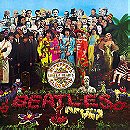
 1001
1001
 8.2
8.2
 0
0
